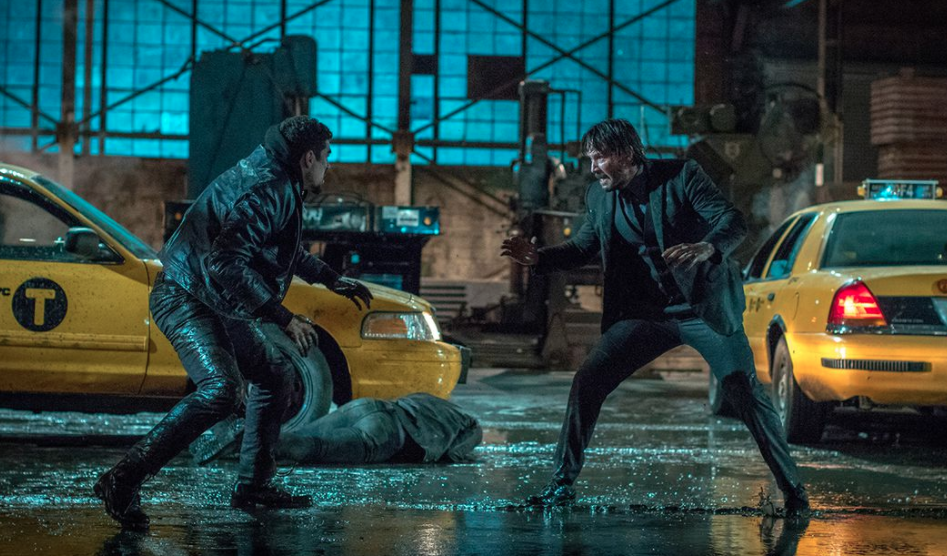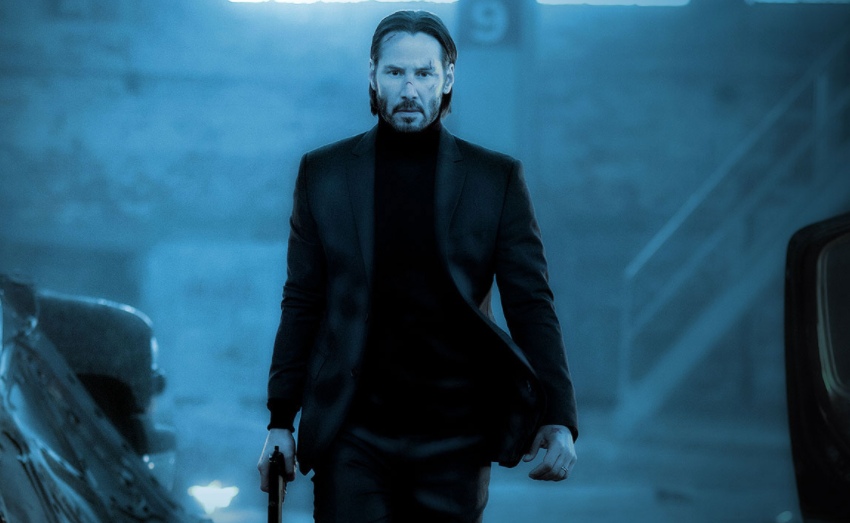The last month has seen the release of two new films that consist of one elongated shootout running the length of the movie. (Well, probably more than two, depending on how cynical you want to be about the state of the modern blockbuster. But I’m focusing on these two.) One of these, Ben Wheatley’s Free Fire, takes place entirely in one location, an abandoned warehouse. The other, Chad Stahelski’s John Wick: Chapter 2, takes place in multiple locations that all kind of feel like the same location – an idea underscored when the title character mysteriously moves from Rome to New York City in one continuous scene without ever hopping on a plane. Guess which one is more interesting?
If you guessed the sequel to 2014’s cult hit John Wick, you guessed wrong. The unassuming cleverness, slick choreography and brute force that allowed that anonymous action movie to break through has entirely dissipated in this second go-around, which once again finds a former stunt man (Stahelski) sitting in the director’s chair. Perhaps there’s a reason these guys typically stick to rolling down staircases and jumping out of helicopters.

Actually, the direction is not the place to find fault with John Wick: Chapter 2, unless you’re focusing on the unusually wooden performance of star Keanu Reeves. The film has the same extravagant production design that made the original pop, and its fight scenes are executed with a sufficient level of competence. But there’s just something so grim about watching this man trudge through the bodies he’s levelled with the series’ trademark “gun fu,” a term that describes a kind of close quarters gun play that’s halfway between punching and shooting. And this time without even the motive of avenging his dead dog.
If you need a little primer on who John Wick is, he’s that age-old film archetype of the retired assassin, a man with Michael Corleone’s reluctance to keep getting pulled back into the game. He’s ready to retire for good this time, having knocked over a garage full of thugs to steal back his stolen car, an impulse he symbolically signals via a toast of vodka with his former adversary (Peter Stormare).
The film has a big stakes problem. The first film managed to be kind of touching in the way the love of a dog drove Wick to kill 173 people, as that dog was a gift from his wife to help him cope with her death. They weren’t the usual stakes, but they gave the film a certain poignancy, not to mention distinguishing it from all those films where the hero is driven by more banal and traditional motives, like saving a kidnapped daughter. In its own way, this also allowed the film to flash a deeply buried sense of humour, surely one of the keys to it catching on the way it did.

That’s where this second film feels rote, and as mentioned earlier, grim. Wick has no greater purpose in this film than to fulfil his obligation to a community of which he no longer considers himself a member, and even the price on his head should he refuse does not seem like a compelling motivator. It’s no wonder he frowns and grimaces his way through this movie, agreeing to a contract on D’Antonio’s sister in order to deliver D’Antonio to a position of greater power. The film tries to give him a righteous cause again when D’Antonio betrays him, but by that point he’s already killed another 173 people, so how sorry can we really feel for him?
What may be most dispiriting is how little the film seems interested in creating memorable set pieces, the cornerstone of any good action movie. The opening scene, in which he takes a garage by force and batters his way out with the very car he was risking his life to obtain, comes the closest. The rest of it quickly develops a sense of monotony as unseen threats spring out at Wick – the whole world is an assassin in disguise, you see – and the scene erupts in gunfire once again. John Wick: Chapter 2 is a bore, and it keeps boring us for more than two hours.

The only respite from the film’s stagnation comes in the form of two charismatic actors who cross paths with Wick, even if one’s presence is little more than a case of stunt casting. The first is Ian McShane, reprising his role of Winston, a kind of grand overseer of all these rules and regulations. He pops in from time to time to delight us with a much-needed dose of bemusement. Then there’s the stunt of reuniting Reeves with his Matrix co-star, Laurence Fishburne, who presides over a sect of assassins who disguise themselves as homeless people. Fishburne is also having a really good time, shouting things like “Somebody puh-LEEZE get this man a gun!” With all these ordinary people in Central Park revealing themselves as assassins hiding in broad daylight, almost like Agent Smith inhabiting the bodies of random citizens, it’s certainly not the only time you’ll think of The Matrix.
Both Reeves and Fishburne might be back in the next Matrix movie, whenever it gets off the ground, though their involvement has yet to be confirmed. Whether that’s a series worth continuing remains to be seen. John Wick isn’t worth continuing, but it probably will be anyway.